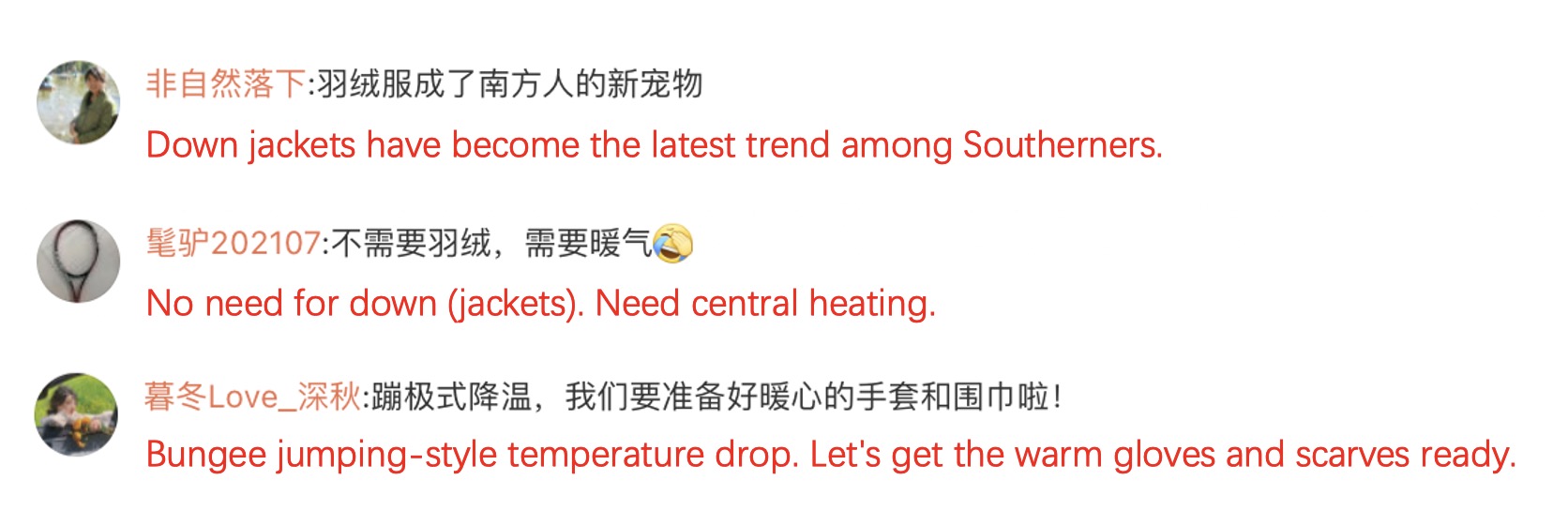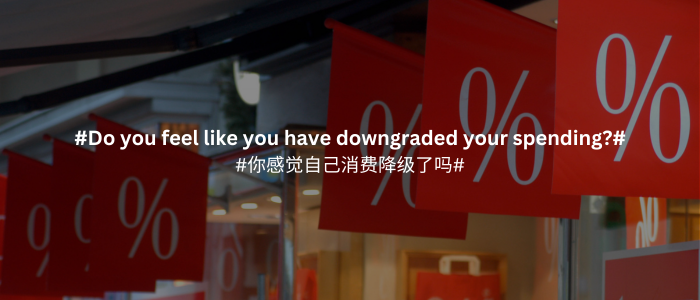With the approaching winter solstice (冬至), the day that marks the arrival of winter in the twenty-four solar terms, temperatures have dropped drastically in China. In some northern regions, by over 20 degrees Celsius in one week, according to the National Meteorological Center.
Download our report on Gen Z consumers

But the cold weather is causing more than just rosy cheeks, on December 15th, due to heavy snow in Beijing, two subway trains collided leaving 102 passengers with broken bones. In the southern regions, including Guangdong and Guangxi, sudden cold waves have caused freezing rain and ice-coated roads. On Weibo, netizens were having a heated discussion on #bungee jump temperature drops boosted the “warm economy”# (蹦极式降温带旺暖经济) in the 3rd week of December, which garnered over 19 million views in three days.
Southern residents adopt down jackets amid falling temperatures
Facing a widespread cold snap, there has been an increasing demand for winter clothing and warming devices. For instance, business owners in the down jacket industry cluster in Jiujiang, Jiangxi province, and the cotton jacket industry in Cangzhou, Hebei province, have experienced increases of 145% and 176%, respectively, in the number of orders compared to the same period in 2022. Even #people in the South have finally succumbed to down jackets# (南方人终于向羽绒服低头了), in response to which a netizen commented, “Yes, just last week I was still wearing a T-shirt.”

Hot pot is another benefactor of the ‘warm economy’. According to Dingdong Maicai, one of China’s major fresh grocery delivery platforms, hot pot sales saw an 80% increase on the first day of the sudden temperature drop compared to the previous period.
Opportunities in the “warm economy”
The notion of the “warm economy” provides businesses with significant opportunities to align their products or services with evolving consumer preferences during colder climates. Companies may proactively seek innovative avenues to deliver warmth, comfort, and convenience to consumers, be it through the provision of hot food delivery services or the introduction of winter-specific products. Furthermore, companies within the food industry, particularly hot pot suppliers, stand to leverage changing consumer inclinations. The notable upswing in hot pot sales during temperature drops signals a potential market, prompting businesses to contemplate diversifying their product portfolios or implementing targeted promotional initiatives that harmonize with prevailing weather conditions. This strategic approach ensures businesses remain attuned to consumer needs while capitalizing on the seasonal shift in demand.
What to know about the “warm economy”
- China faces a drastic temperature drop of over 20 degrees Celsius in some northern regions within a week, coinciding with the approaching winter solstice.
- Heavy snow in Beijing led to a subway collision, injuring 102 passengers. Southern regions experience freezing rain and icy roads, prompting social media discussions on the impact of temperature drops on the “warm economy.”
- Southern residents adapt to the cold by embracing down jackets, causing a surge in demand. Businesses in Jiujiang (down jacket industry) and Cangzhou (cotton jacket industry) report significant order increases of 145% and 176%, respectively.
- The trend extends to hot pot sales, spiking by 80% on the first day of the temperature drop. Businesses can explore economic opportunities by aligning with changing consumer needs during colder weather.





